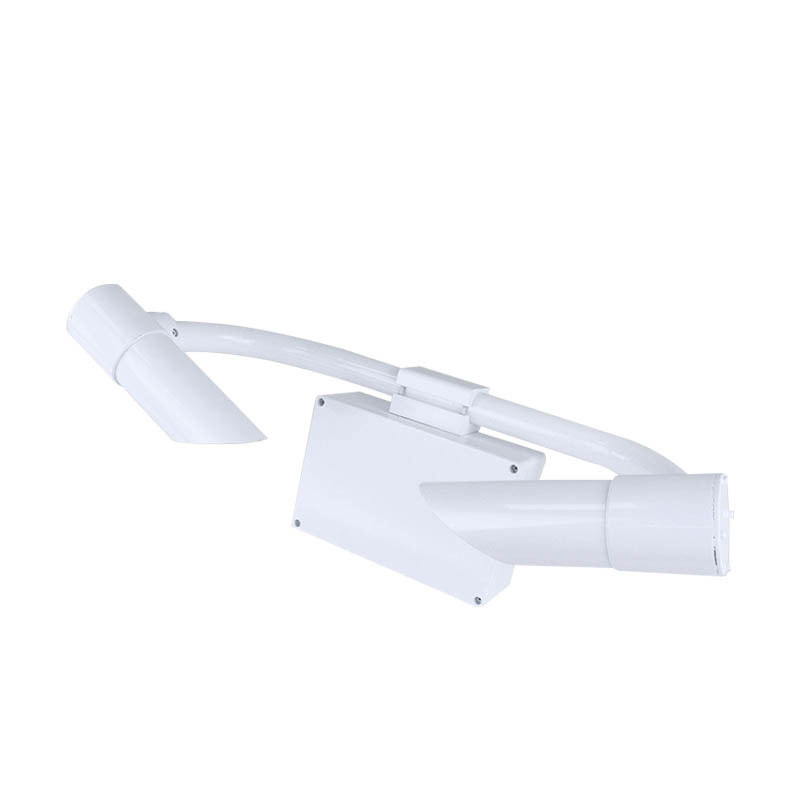Tianqiong Sensor IOT Technology Co., Ltd
Sales Manager:Ms. Emily Wang
Cel,Whatsapp,Wechat:+86 15898932201
Email:info@fengtutec.com
Add:No. 155 Optoelectronic Industry Accelerator, Gaoxin District, Weifang, Shandong, China

Sales Manager:Ms. Emily Wang
Cel,Whatsapp,Wechat:+86 15898932201
Email:info@fengtutec.com
Add:No. 155 Optoelectronic Industry Accelerator, Gaoxin District, Weifang, Shandong, China

Model:FT-N10
Brand:tianqiong
1.Introduction to Environment Visibility Sensor Products
Environment Visibility Sensor measures visibility from 1m to 10km and is suitable for road and aviation applications as well as weather observation networks.The N10 Environment Visibility Sensor uses forward scattering method to measure the total extinction coefficient of the air, and then calculates the current visibility, and is widely used in road traffic, meteorological and other industries.
2.Technology features of Environment Visibility Sensor
1.The instrument shell is high-quality aluminum material, and is sprayed after anodization.The whole machine has excellent waterproof, dustproof and collision-proof performance;
2.The instrument transmitting and receiving lenses are designed downward to greatly reduce interference with sunlight and other miscellaneous light;
3.Weather phenomenon identification, which can identify weather phenomena such as fog, rain, snow, mixed precipitation, sunshine, etc., with a high recognition rate;
4.Built-in watchdog circuit to ensure reliable and stable outdoor operation for a long time;
5.The instrument communication and power interfaces both contain lightning protection designs, which greatly reduce lightning strikes and static damage;
6.12~24V wide voltage power supply, total power is about 1W, and the power consumption is extremely low.It can be powered by solar panels, batteries, etc.for a long time;
7.The digital interface uses RS485 or RS232, the standard MODBUS protocol, and there is no need for protocol adaptation;
8.The instrument can output 15s, 1min, and 10min visibility values, and can be read directly without configuration, making it more flexible to use.
3.Environment Visibility Sensor implementation standards
QX/T 536-2020 Forward scattering visibility meter test method
4.Environment Visibility Sensor Technical Indicators
| Main parameters | Parameter range | Resolution | error |
| Range | 10km | 1m | ≤2km ±2%2km~10km ±5%>10km ±10% |
| Repeatability | ≤4% | ||
| Weather phenomena | Fog, rain, snow, mixed precipitation, sunny | ||
| Weather phenomenon recognition rate | ≥95% | ||
| Operating temperature | -40~60℃ | ||
| Working humidity | 0~100%RH | ||
| Working power supply | 12~24V | ||
| Power consumption | 1W | ||
| size | 610x230x360mm (Length x Width x Height) | ||
| weight | ≤10kg | ||
5.Environment Visibility Sensor installation instructions
1.Installation location
The installation location of the visibility meter needs to be selected on an open, flat, unobstructed ground, away from buildings, trees, shrubs, peaks and other objects.This ensures that the instrument's observation range is not blocked and the data is more accurate.
Unnecessary optical interference should be avoided.The receiver of the visibility meter should be installed to a strong light source (such as sunlight), and the transmitter and receiver should be located in the north-south direction.
2.Installation height
The installation height of the visibility meter should be greater than 1.5m and less than 3m.If the installation height exceeds 3m, the corresponding height should be calibrated.
3.Installation steps
3.1 Before installation, users should prepare columns and install them on the columns using the clamps provided by the instrument.
3.2 Lift the instrument to a suitable position, install and fix the visibility instrument using the bolts after the clamp.During installation, ensure that the receiver and transmitter openings are downward, otherwise they should be reinstalled.
The construction of smart wetlands takes wetland monitoring equipment as the core, and combines Internet of Things (IoT), big data, and artificial intelligence technologies to build a three-dimensional monitoring network covering hydrology, meteorology, and ecology.The wetland weather stations...
Soil moisture monitoring is a crucial link in modern agricultural water-saving and drought resistance. By scientifically measuring and analyzing soil moisture conditions, it provides accurate data support for irrigation decisions and drought resistance scheduling, which is of great significance for...
In today's society, the importance of environmental monitoring is increasingly prominent. The efficient operation of fields such as weather forecasting for travel protection, agricultural production for crop planting adjustment, urban planning with climate considerations, and traffic management...
The 7-element Portable Weather Station can real-time monitor seven key meteorological elements: wind speed, wind direction, air temperature, humidity, atmospheric pressure, illumination, and optical rainfall. Monitoring wind speed and direction helps understand air flow conditions, which is of great...